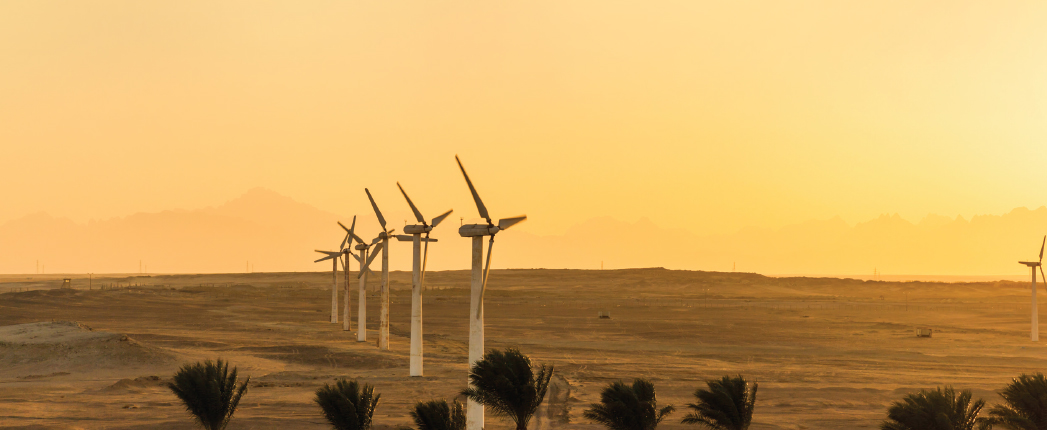
Base Oil Report: Trends
Societies around the globe have been harnessing wind energy for thousands of years. According to the United States Energy Information Administration, one of the first uses of wind energy occurred as early as 5000 B.C. when the wind was harnessed to propel boats down the Nile River. In China around 200 B.C. simple wind-powered pumps were used to siphon water, while windmills with blades made of woven reeds were used to grind grain in the Middle East and Persia.
Later, new ways to use wind energy emerged and spread to virtually all regions of the world. In the late 1800s small wind-electric generators began to be widely used in areas where access to electricity was scarce. These were some of the first iterations of the modern wind turbines that are used to generate large amounts of electricity today.
Spurred on by the infamous oil shortages of the 1970s, wind turbines became an increasingly popular way to produce electricity as the world sought alternative energy sources. In the U.S., the federal government funded research and development of large wind turbines, and in the early 1980s thousands of these wind turbines were installed in the state of California.
In the following decades, an increasing emphasis was placed on renewable, clean energy, urging the U.S. government to offer investment and tax incentives for wind power projects. Shortly thereafter, state governments also put in place requirements for electricity generation from renewable sources, which led electric power marketers and utilities providers to begin offering wind-derived electricity. These programs led to an increase in the number of wind turbines in the country.
All in all, the share of electricity generated from wind in the U.S. rose from less than 1% in the early 1990s to about 9.2% in 2021, according to the EIA.
Comparable—or even greater—expansion of wind energy has been observed elsewhere, too. In Europe, clean energy incentives have resulted in a large uptake of wind-derived energy, while China has invested heavily in wind energy and is now the world’s biggest generator of wind-powered electricity.
In 1990, 16 countries generated a total of about 3.6 billion kilowatt hours of wind electricity, according to the EIA. In 2020, 129 countries generated about 1.6 quadrillion kWh of wind electricity.
With clean energy sources becoming ever more important as the world attempts to battle climate change, wind turbines are necessarily increasing both in number and in size. In fact, the International Energy Agency has predicted that global installed wind energy capacity will double over the next ten years.
Meanwhile, the lubricants that allow this vital energy-generating equipment to operate smoothly and efficiently are also changing to keep pace with the new demands being placed on them.
Many wind turbines are often located in remote areas and must operate in extreme conditions. Because they are not always easily accessible, operators have expressed a need for reliable and effective lubricants with extended drain intervals to minimize costly and challenging maintenance.
How are these robust lubricants formulated? That’s where synthetic base stocks come into play.
ExxonMobil, Chevron Phillips Chemical and other synthetic base stock producers have touted their metallocene polyalphaolefins as a top contender for use in wind turbine lubricants, noting that these synthetic base stocks have demonstrated the ability to extend both the life of the lubricant and the equipment in which it operates.
Metallocene polyalphaolefins, commonly referred to as mPAOs, are a category of hydrogenated olefin oligomers that are manufactured by the catalytic polymerization of normal alphaolefins. These synthetic base fluids are colorless and possess well-defined, wax-free isoparaffinic structures.
What makes mPAOs ideal for use in wind turbine lubricants?
The International Energy Agency noted that nearly 25% of all wind farms are installed in cold climates. Because of this, the gear oils and greases used to lubricate wind turbines must deliver exceptional low-temperature performance, and mPAOs can help in that endeavor.
According to ExxonMobil’s website, mPAOs “demonstrate a lower pour point and better Brookfield viscosity” than their mineral oil counterparts. These characteristics combine to allow for improved low-temperature fluidity and cold-start capabilities.
Another notable factor affecting wind turbine lubricant formulation is that wind turbines are becoming larger, while their gear boxes are becoming smaller. Naturally, this evolution places even more stress on the lubricant.
In lab and field tests performed by ExxonMobil, lubricants formulated with mPAOs have demonstrated excellent stability under severe operating conditions, the company said. These synthetic base stocks also have less tendency to foam than mineral oils do, allowing lubricants formulated with them to avoid equipment overflow. These performance improvements have driven many wind turbine lubricant blenders to switch from conventional PAOs to mPAOs.
What is the difference between the two fluids? According to a report published by ExxonMobil in 2019, mPAOs offer increased viscosity index over their conventional PAO counterparts. They also offer enhanced shear stability in addition to the better low-temperature performance and minimized foaming mentioned above.
Nearly 45% of the high-viscosity base stock market has switched to mPAOs, according to ExxonMobil’s website. Because of mPAOs’ significant performance benefits, this is a trend that is likely to continue into the future.
Sydney Moore is managing editor of Lubes’n’Greases magazine. Contact her at Sydney@LubesnGreases.com